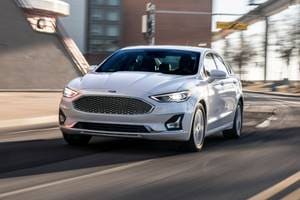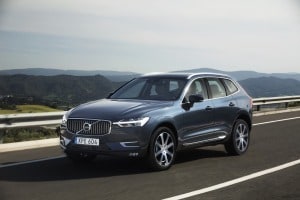Edmunds.com Raises 2013 Auto Sales Forecast to 15.5 Million

After reviewing first quarter auto sales and macroeconomic trends, Edmunds.com is raising its auto sales forecast to 15.5 million for 2013. A key reason is car shopper resilience in the face of continued fiscal issues at home, and more recently, flare-ups of fiscal drama in Europe. Buyers are also feeling wealthier thanks to rising home prices and the strong stock market, and refinancing home mortgages as well as an improving labor market have put additional cash in some buyers' pockets. Meanwhile, pent-up demand continues to release, thanks to the aging fleet and more widely available credit. Looking ahead, a boost in lease returns in the second half of the year should grow sales then, even compared to the strong 2012 finish. And, by some indicators, new car sales growth won't be maxed out in 2013 — sales per driver and vehicles per driver will remain below pre-recession levels even after 2013 growth.

Tone Deaf to Government Noise?
New car buyers remained in the market after the fiscal cliff deal ended the payroll tax holiday in January and raised income and other taxes for some households, although these changes were not expected to have noticeable effects on car sales. More surprisingly, buyers did not pause when $42 billion in federal spending cuts, also known as the sequester, went into effect March 1 for the rest of the government's current fiscal year or when the government went through several rounds of negotiations to extend its current operating budget through the end of its fiscal year in September. Even now, as Congress continues to fight over how to resolve its budget issues — a critical issue with no deal in sight — car shoppers are unfazed. Of course, car sales are not completely "safe" yet. The impact from the sequester has yet to come as layoffs and other cuts from decreased program budgets come into effect. And, if budget negotiations between Republicans and Democrats fail to make progress in the coming weeks, there's a chance that consumers will hold back on spending, including for big purchases like vehicles. But recent consumer reactions do raise the possibility that consumers are just becoming tone deaf to all of the noise that keeps popping up in Washington.
The Effect of a Good Wealth Effect
One key reason that car shoppers are sending new car sales to levels not seen since early 2008 is that shoppers are feeling wealthier. Home prices are rising across the country, with average prices showing month over month improvement in each month of the past year, according to the S&P/Case-Shiller 20-city home price index. Recent stock market highs also have boosted consumer perceptions of their personal economic situations, as stocks and 401(k)s jumped. Even consumers not actively involved in the market typically view market upswings positively, since the stock market is seen as a barometer of general economic conditions.
In addition, some car shoppers are benefitting from actual increased cash in their pockets. With interest rates at historic lows, home mortgage refinancing activity has soared in the past few quarters. Edmunds.com estimates that mortgage holders who have recently refinanced could save $210 per month for the life of their loans — which could significantly contribute to a new car loan or lease payment. For other shoppers, additional income could come from a new or better job. The labor market also has improved this past quarter, with 236,000 jobs added in February and 193,000 expected in March. While more jobs alone are not enough to support more car sales — income must grow as well — a stronger labor market will help fuel economic growth in general, which itself will benefit car sales and additional jobs growth.
Looking Ahead
Another positive for 2013 car sales is that pent-up demand continues to release as expected and support strong sales. More widely available credit and historically low interest rates are enticing shoppers back to the market, even as the still-aging fleet forces other drivers to finally replace their vehicles. These factors should remain in play for at least the rest of 2013.
On a monthly basis, car sales should grow relatively faster in the late spring and summer months, since sales were weaker in most of these months last year. Year over year growth will be harder in the second half of the year, which boasted several strong months in 2012 — including September (seasonally adjusted average rate, or SAAR, of 14.9 million), November (15.5 million SAAR), and December (15.3 million SAAR). But, in the second half of the year, lease returns will show a stronger increase over 2012 than in the first half, bringing a new influx of shoppers to the market and supporting sales growth.
Finally, and perhaps most encouragingly, new car sales growth should continue beyond 2013. In particular, two key indicators suggest that not all buyers are back in the market yet. After 2013, the number of new car sales per driver will still sit below its lowest level since at least 1991 — even following four years in which year over year growth averaged nearly 10 percent. Meanwhile, despite improvement in 2013, the number of vehicles per driver will also remain below pre-recession levels.


Lacey Plache is the Chief Economist for Edmunds.com. Follow @AutoEconomist on Twitter.





